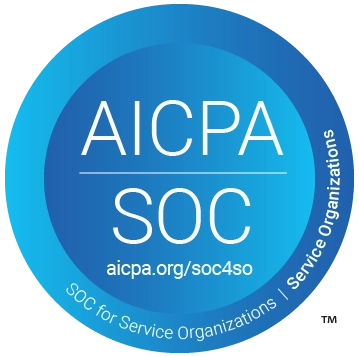Log In to My PreK-12 Platform


Beginning & Intermediate Algebra, 1st Edition
Format Options:
Loose-Leaf Purchase
Unbound loose-leaf version of full text
Shipping Options
- Standard
- Next-day air
- 2nd-day air
Orders within the United States are shipped via FedEx or UPS Ground. For shipments to locations outside of the U.S., only standard shipping is available. All shipping options assume the product is available and that processing an order takes 24 to 48 hours prior to shipping.
Hardcopy
Complete text bound in hardcover or softcover
Shipping Options
- Standard
- Next-day air
- 2nd-day air
Orders within the United States are shipped via FedEx or UPS Ground. For shipments to locations outside of the U.S., only standard shipping is available. All shipping options assume the product is available and that processing an order takes 24 to 48 hours prior to shipping.
* The estimated amount of time this product will be on the market is based on a number of factors, including faculty input to instructional design and the prior revision cycle and updates to academic research-which typically results in a revision cycle ranging from every two to four years for this product. Pricing subject to change at any time.
Instructor Information
Quick Actions (Only for Validated Instructor Accounts):
Today’s Developmental Math students enter college needing more than just the math, and this has directly impacted the instructor’s role in the classroom. Instructors have to teach to different learning styles, within multiple teaching environments, and to a student population that is mostly unfamiliar with how to be a successful college student. Authors Andrea Hendricks and Pauline Chow have noticed this growing trend in their combined 30+ years of teaching at their respective community colleges, both in their face-to-face and online courses. As a result, they set out to create course materials that help today’s students not only learn the mathematical concepts but also build life skills for future success. Understanding the time constraints for instructors, these authors have worked to integrate success strategies into both the print and digital materials, so that there is no sacrifice of time spent on the math. Furthermore, Andrea and Pauline have taken the time to write purposeful examples and exercises that are student-centered, relevant to today’s students, and guide students to practice critical thinking skills. Beginning and Intermediate Algebra and its supplemental materials, coupled with ALEKS or Connect Math Hosted by ALEKS, allow for both full-time and part-time instructors to teach more than just the math in any teaching environment without an overwhelming amount of preparation time or even classroom time.
Chapter S: Success Strategies
S.1: Time Management and Goal Setting
S.2: Learning Styles
S.3: Study Skills
S.4: Test Taking
S.5: Blended and Online Classes
Chapter 1: Real Numbers and Algebraic Expressions
1.1: The Set of Real Numbers
1.2: Fractions Review
1.3: The Order of Operations, Algebraic Expressions and Equations
1.4: Addition of Real Numbers
1.5: Subtraction of Real Numbers
1.6: Multiplication and Division of Real Numbers
1.7: Properties of Real Numbers
1.8: Algebraic Expressions
Chapter 2: Linear Equations & Inequalities in One Variable
2.1: Equations and Their Solutions
2.2: The Addition Property of Equality
2.3: The Multiplication Property of Equality
2.4: More on Solving Linear Equations
2.5: Formulas and Applications from Geometry
2.6: Percent, Rate, and Mixture Problems
2.7: Linear Inequalities in One Variable
Chapter 3: Linear Equations in Two Variables
3.1: Equations and the Rectangular Coordinate System
3.2: Graphing Linear Equations
3.3: The Slope of a Line
3.4: More about Slope
3.5: Writing Equations of Lines
3.6: Functions
Chapter 4: Systems of Linear Equations in Two and Three Variables
4.1: Solving Systems of Linear Equations Graphically
4.2: Solving Systems of Linear Equations by Substitution
4.3: Solving Systems of Linear Equations by Elimination
4.4: Applications of Systems of Linear Equations in Two Variables
4.5: Solving Systems of Linear Equations in Three Variables and Their Applications
Chapter 5: Exponents, Polynomials, and Polynomial Functions
5.1: Rules of Exponents and Zero and Negative Exponents
5.2: More Rules of Exponents and Scientific Notation
5.3: Polynomial Functions, Addition and Subtraction of Polynomials
5.4: Multiplication of Polynomials and Polynomial Functions
5.5: Special Products
5.6: Division of Polynomials
5.7: Synthetic Division and the Remainder Theorem
Chapter 6: Factoring Polynomials and Polynomial Equations
6.1: Greatest Common Factor and Grouping
6.2: Factoring Trinomials
6.3: More on Factoring Trinomials
6.4: Factoring Binomials
6.5: Solving Quadratic Equations and Other Polynomial Equations by Factoring
6.6: Applications of Quadratic Equations
Chapter 7: Rational Functions and Equations
7.1: Rational Functions and Simplifying Rational Expressions
7.2: Multiplication and Division of Rational Expressions
7.3: Least Common Denominator and Equivalent Fractions
7.4: Addition and Subtraction of Rational Expressions
7.5: Complex Fractions
7.6: Solving Rational Equations
7.7: Proportions and Other Applications of Rational Equations
Chapter 8: More on Functions and Graphs; Variation
8.1: The Domain and Range of Functions
8.2: Graphing and Writing Linear Functions
8.3: Graphing Nonlinear Functions and Piecewise Defined Functions
8.4: Variation and Applications
Chapter 9: Inequalities and Absolute Value
9.1: Compound Inequalities
9.2: Absolute Value Equations
9.3: Absolute Value Inequalities
9.4: Linear Inequalities in Two Variables and Systems of Linear Inequalities
Chapter 10: Rational Exponents, Radicals, and Complex Numbers
10.1: Radicals and Radical Functions
10.2: Rational Exponents
10.3: Simplifying Radical Expressions
10.4: Adding, Subtracting, and Multiplying Radical Expressions
10.5: Dividing Radicals and Rationalizing
10.6: Radical Equations and their Applications
10.7: Complex Numbers
Chapter 11: Quadratic Equations and Functions
11.1: Quadratic Functions and their Graphs
11.2: Solving Quadratic Equations by the Square Root Property and Completing the Square
11.3: Solving Quadratic Equations by the Quadratic Formula
11.4: Solving Equations by Using Quadratic Methods
11.5: More on Graphing Quadratic Functions
11.6: Solving Quadratic and Rational Inequalities in One Variable
Chapter 12: Exponential and Logarithmic Functions
12.1: Operations and Composition of Functions
12.2: Inverse Functions
12.3: Exponential Functions
12.4: Logarithmic Functions
12.5: Properties of Logarithms
12.6: The Common Log, Natural Log, and Change of Base Formula
12.7: Exponential and Logarithmic Equations and Applications
Chapter 13: Conic Sections and Nonlinear Systems
13.1: The Parabola and the Circle
13.2: The Ellipse and the Hyperbola
13.3: Solving Nonlinear Systems of Equations
13.4: Solving Nonlinear Inequalities and Systems of Inequalities
Chapter 14: Sequences, Series, and the Binomial Theorem
14.1: Sequences
14.2: Arithmetic Sequences and Series
14.3: Geometric Sequences and Series
14.4: The Binomial Theorem
About the Author
Andrea Hendricks
Oiyin Pauline Chow
Need support? We're here to help - Get real-world support and resources every step of the way.

